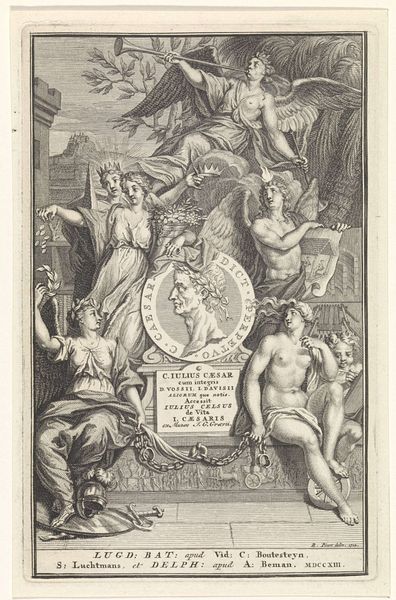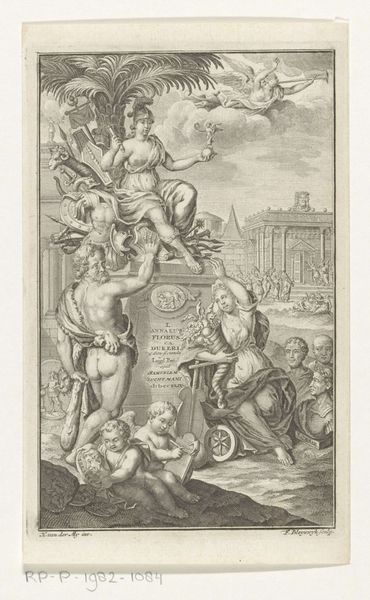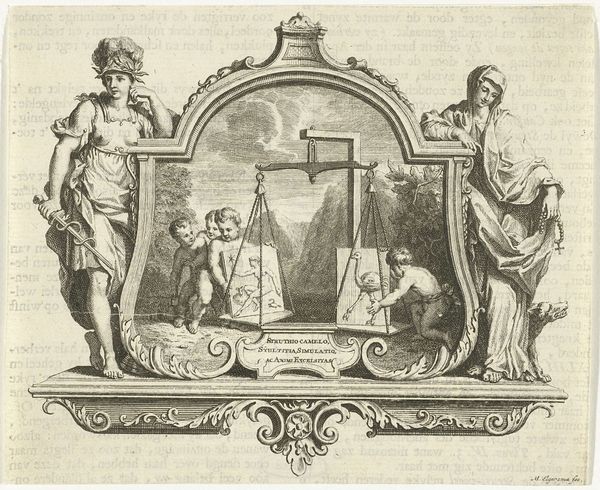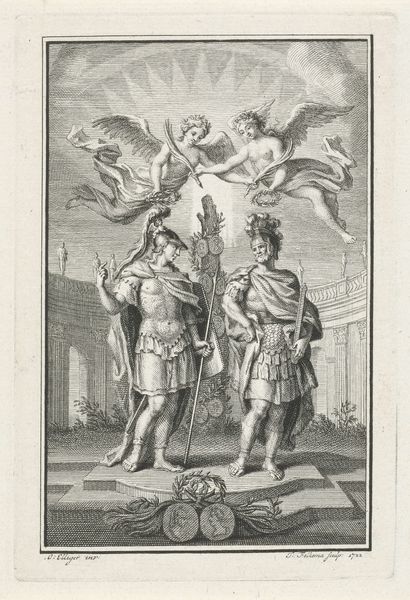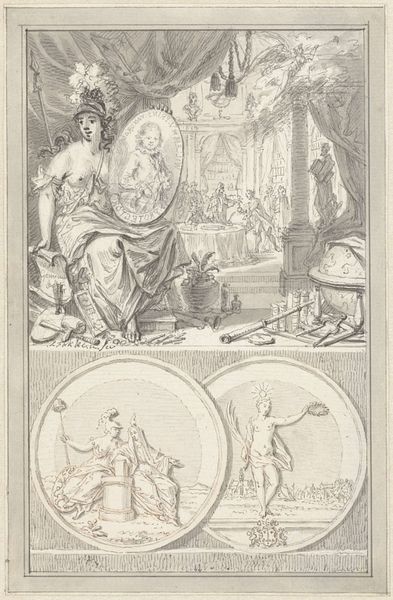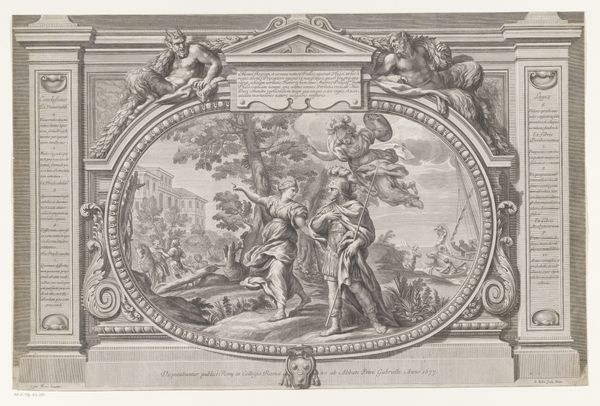
graphic-art, print, engraving
#
graphic-art
#
allegory
#
baroque
# print
#
old engraving style
#
line
#
engraving
Dimensions: height 59 mm, width 78 mm
Copyright: Rijks Museum: Open Domain
Editor: Here we have Jan Ruyter's engraving from 1735, "Titelvignet voor de titelprent van het toneelstuk 'Boerekermis'," a title vignette for a play. I find the overall composition very classical, yet there's something about the central image that seems almost chaotic. What’s your take? Curator: I see a complex layering of allegorical symbols typical of the Baroque period. It presents an opportunity to examine how art served ideological functions. Given the title translates to "Peasant Fair", we need to consider who the intended audience was and how this imagery reinforces existing social hierarchies. What do you notice about the figures of Athena and Mercury framing the central image? Editor: They seem like protectors or gatekeepers to whatever is happening in the central image… a civilizing force looking down on this "Peasant Fair," perhaps? Curator: Exactly! Their presence signifies an attempt to impose order and reason on the perceived chaos of peasant life. Consider how the idealized bodies of these gods contrast with the unruly figures in the central vignette. What does this juxtaposition tell us about the power dynamics at play? Editor: It suggests that the upper classes viewed peasant life as something needing to be controlled or contained, even perhaps mocked? That's unsettling. Curator: Precisely. Remember that art in this period often reflected and reinforced existing social structures. Examining this engraving through a lens of class and power allows us to decode its underlying message. Editor: I hadn’t thought about it that way. Looking at the expressions of the central figures, I understand that contrast more fully now. It certainly shifts the work's tone. Thanks!
Comments
No comments
Be the first to comment and join the conversation on the ultimate creative platform.




